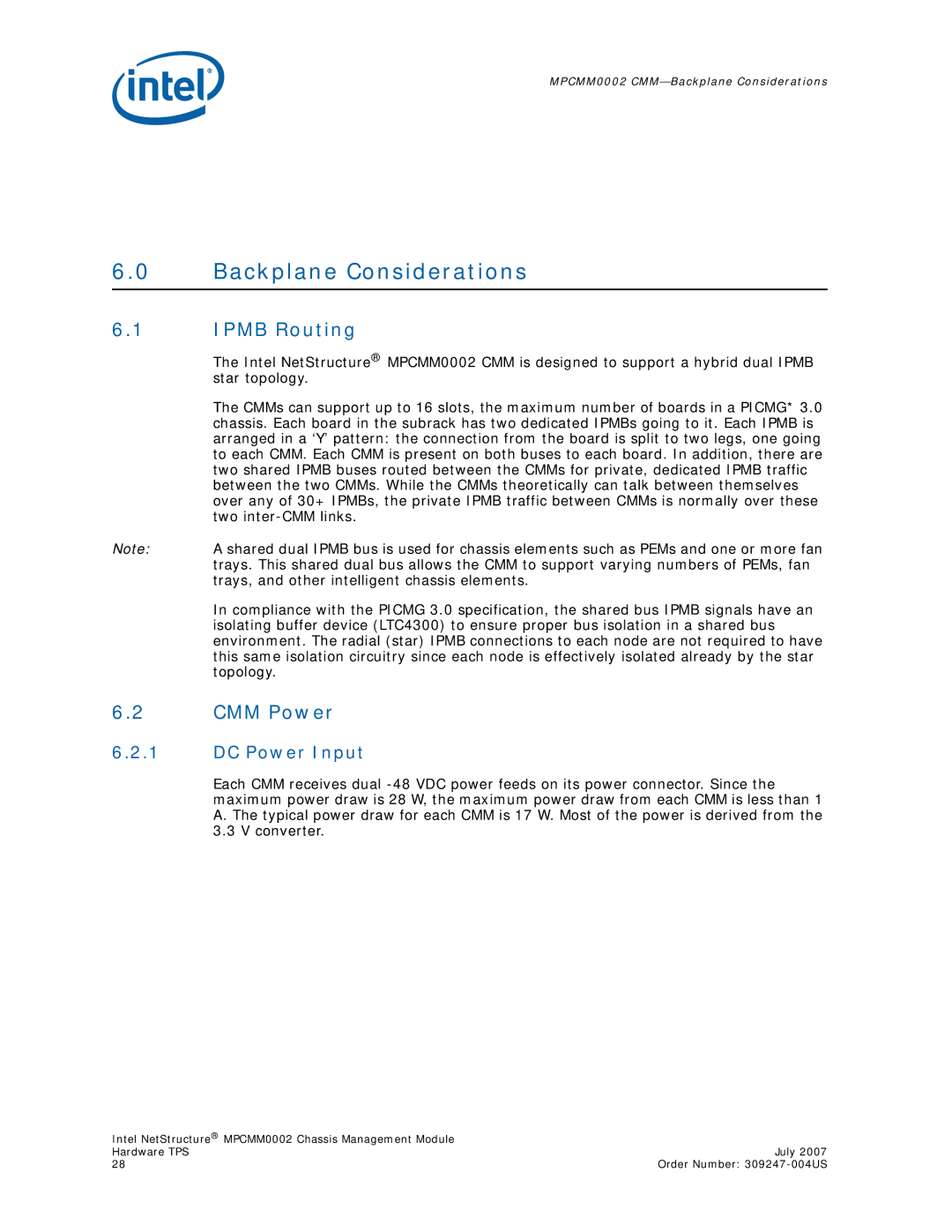
MPCMM0002
6.0Backplane Considerations
6.1IPMB Routing
The Intel NetStructure® MPCMM0002 CMM is designed to support a hybrid dual IPMB star topology.
The CMMs can support up to 16 slots, the maximum number of boards in a PICMG* 3.0 chassis. Each board in the subrack has two dedicated IPMBs going to it. Each IPMB is arranged in a ‘Y’ pattern: the connection from the board is split to two legs, one going to each CMM. Each CMM is present on both buses to each board. In addition, there are two shared IPMB buses routed between the CMMs for private, dedicated IPMB traffic between the two CMMs. While the CMMs theoretically can talk between themselves over any of 30+ IPMBs, the private IPMB traffic between CMMs is normally over these two
Note: A shared dual IPMB bus is used for chassis elements such as PEMs and one or more fan trays. This shared dual bus allows the CMM to support varying numbers of PEMs, fan trays, and other intelligent chassis elements.
In compliance with the PICMG 3.0 specification, the shared bus IPMB signals have an isolating buffer device (LTC4300) to ensure proper bus isolation in a shared bus environment. The radial (star) IPMB connections to each node are not required to have this same isolation circuitry since each node is effectively isolated already by the star topology.
6.2CMM Power
6.2.1DC Power Input
Each CMM receives dual
Intel NetStructure® MPCMM0002 Chassis Management Module |
|
Hardware TPS | July 2007 |
28 | Order Number: |
